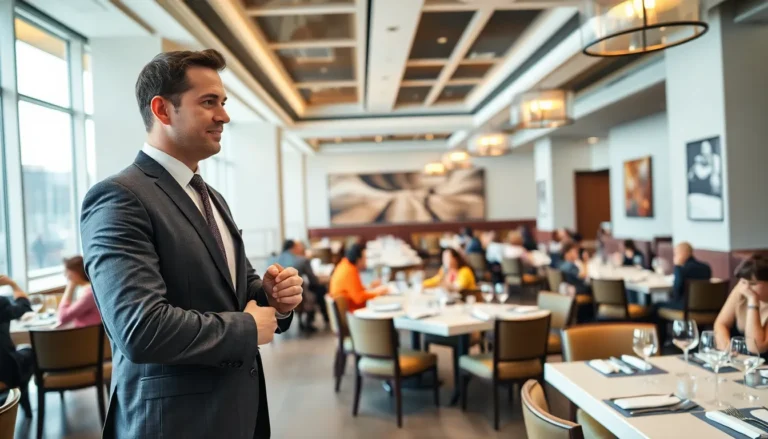Society and culture, two terms that we often hear tossed around like salad at a potluck. But what really binds them together? In this text, we’re diving into the thrilling world of sociology and cultural studies, exploring how these concepts interact like a couple in a dance-off: sometimes harmonious, sometimes chaotic, but always fascinating. So buckle up as we embark on a journey to uncover the secrets of society and culture.
Table of Contents
ToggleUnderstanding the Relationship Between Society and Culture

The relationship between society and culture is dynamic and multifaceted. Society can be viewed as the scaffold that supports cultural practices and beliefs. Essentially, society encompasses the people, institutions, and structures that make communities thrive, while culture represents the shared ideas, values, and traditions of those communities.
Understanding this relationship is crucial: culture influences social behavior, shaping norms and values, and, in turn, society molds culture by providing the framework within which cultural expressions unfold. Examples abound, from collective celebrations like Thanksgiving in the United States to communal gatherings during festivals in various cultures. These events encapsulate how society and culture continuously interact, renew, and redefine one another.
Key Components of Society
Several components form the backbone of society, each playing a crucial role in shaping human interactions and cultural expressions.
Social Groups
Social groups, ranging from families to large communities, influence individual behaviors and cultural identity. These relationships often dictate how people perceive the world around them. For example, a tight-knit community often emphasizes collective values, shaping cultural expressions accordingly.
Institutions
Institutions, like education, religion, and government, forge the policies that underpin societal functions. They not only serve as platforms for cultural transmission but also adapt to incorporate new cultural elements. The educational system, for instance, plays a fundamental role in both imparting knowledge and instilling cultural values.
Social Norms and Values
Every society has unwritten rules, social norms, that guide behavior. These norms are not static: they evolve as cultural contexts shift. For instance, the growing acceptance of various identities and lifestyles reflects how societal norms can change over time, demonstrating the fluidity of culture.
Diversity in Cultural Expressions
Cultural diversity is a vibrant tapestry that enriches society. Various cultural groups bring distinct perspectives, traditions, and customs, enhancing the overall social fabric. This diversity can be expressed through arts, music, food, and language, each offering a glimpse into different ways of life.
Artistic Expressions
Visual arts, literature, and performance arts allow cultures to communicate narratives and values. Consider how street art in urban settings often conveys social issues, giving voice to the marginalized.
Festivals and Celebrations
Festivals are a joyful manifestation of cultural diversity, showcasing unique practices that bring communities together. From Diwali in India to Mardi Gras in New Orleans, these celebrations often have deep social significance, reinforcing cultural identity and shared experiences.
Culinary Diversity
Food is another powerful medium of cultural expression. Culinary traditions not only provide sustenance but also serve as a gateway to understanding a culture’s history and values. Sharing a meal can foster connections across diverse communities, emphasizing that culture is, at its core, about relationships.
The Role of Social Institutions
Social institutions act as the framework for societal interactions, enabling stability and continuity in culture.
Education
The education system is pivotal in transmitting cultural values and shaping societal norms. From childhood through higher education, individuals are taught not only academic skills but also social responsibility and cultural heritage.
Religion
Religion often reinforces societal standards by instilling moral codes, offering communal cohesion, and advancing cultural practices. Different religions celebrate various cultural traditions, intertwining faith and culture in ways that shape society’s worldview.
Family Structures
Families serve as the first social institution for most individuals, deeply influencing personal identities and cultural orientation. The dynamics within different family structures can vary greatly, affecting how culture is passed on to newer generations.
Cultural Change and Its Impact on Society
Cultural change is inevitable, driven by social evolution, technological advancements, and intercultural interactions.
Influence of Technology
In the digital age, technology has significantly accelerated cultural change. The internet facilitates the blending of cultures, allowing ideas to transcend geographical barriers. Social media, in particular, has fostered new cultural norms and movements, impacting how society functions.
Globalization
The phenomenon of globalization contributes to cultural change as societies interconnect through trade and travel. This results in the exchange of ideas, practices, and products, which can lead to both cultural enrichment and challenges like cultural homogenization.
Globalization and Cultural Exchange
Globalization has radically altered the landscape of cultural exchange. As the world grows smaller, cultures can interact and influence each other more rapidly than ever before.
Economic Interactions
Trade relationships enable cultural artifacts, food, and practices to cross borders easily. This interlinkage creates opportunities for cultural enrichment but can also raise concerns about cultural appropriation and loss of local traditions.
Cultural Hybridity
Hybrid cultural forms emerge when two or more cultures intersect. This creates unique expressions, such as fusion cuisine or multicultural music genres, enriching the global cultural landscape while challenging conventional cultural boundaries.
The Future of Society and Culture
As society and culture continue to evolve, acknowledging the importance of inclusivity and adaptability is vital.
Embracing Change
Change is the only constant: societies must embrace change to thrive. Cultural adaptability will play a key role in responding to global challenges such as climate change and social inequality.
Technological Advancements
Future advancements will likely influence cultural practices and social interactions even further, making it essential for cultures to remain flexible and ready to evolve.
Sustainability
Balancing modernization with tradition will be crucial. Societies that honor their cultural heritage while innovatively addressing future needs will lead the charge in establishing a meaningful existence.





